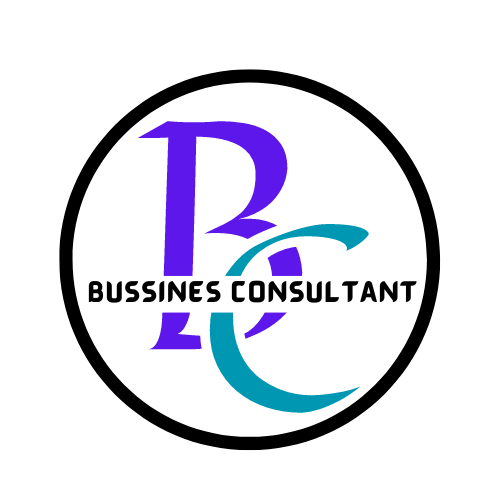Understanding of making a Business Plan!
Definition of a Business Plan
A business plan is essentially a written document that outlines your business’s goals, the strategy you’ll use to achieve them, and the time frame for. It incorporates aspects like marketing strategy, financial forecast, and operational procedures. Here are different types of business plans you might consider:
- Traditional Business Plan: A comprehensive document, typically used to secure funding.
- Lean Business Plan: A simplified version that focuses on key points like value propositions and revenue streams.
- Operational Business Plan: A detailed plan that highlights daily operations and processes.
The purpose of a business plan often evolves throughout the business lifecycle, acting as a roadmap that guides founders through various stages—from startup to growth and expansion.
Benefits of making a Business Plan
Crafting a business plan offers numerous benefits:
- Clarity of Vision and Direction: A clear plan helps you define where you want your business to go and how to get there.
- Enhanced Chances of Securing Financing: Investors and lenders appreciate a well-structured plan as it shows that you’ve done your homework.
- Roadmap for Future Growth: It not only helps in setting goals but also in tracking performance against those goals.
Role of making a Business Plan in Decision Making
A business plan plays a pivotal role in decision-making:
- Informing Strategic Choices: It serves as the foundation for making informed decisions that align with your business’s vision.
- Aligning Team Efforts: By sharing the plan, you ensure everyone understands their roles and how they contribute to the business’s goals.
- Adapting to Market Changes: A robust business plan can help you pivot in response to market dynamics or unforeseen challenges.

Key Components of a Business Plan
Executive Summary
The executive summary is the first section of your business plan, but it’s often written last. It should encapsulate:
- Business Concept and Goals: A snapshot of what you do and what you aim to achieve.
- Attention-Grabbing Elements: Make it interesting! Including compelling statistics or anecdotes can capture the reader’s interest.
- Efficiency and Clarity: Keep it concise—generally two pages or less—highlighting only the key points that make your business unique.
Company Description
Your company description should give a comprehensive overview:
- Details About Structure and Ownership: Include information about the legal structure (LLC, corporation, etc.) and who owns the business.
- Mission, Vision, and Values: Clearly articulate what drives your business and what you hope to achieve in the long run.
- Market Gap Analysis: Explain what unique problem your business solves and how it fits into the market.
Market Analysis
Conducting market analysis is vital:
- Researching Industry Trends: Show that you understand the competitive landscape and current market dynamics.
- Identifying Target Customer Demographics: Describe your ideal customer and what makes them likely to choose your product or service.
- Competitor Analysis: By examining your competition, you can identify opportunities for differentiation and better positioning.

Developing the Business Strategy and Goals
Business Objectives
Defining clear objectives helps set a path for success:
- Setting Short-term and Long-term Goals: Lay out specific, actionable goals for both the near future and the long haul.
- SMART Criteria: Keep your goals Specific, Measurable, Achievable, Relevant, and Time-bound to ensure they’re realistic.
- Alignment with Vision: Your objectives should sync well with the overarching vision of your business.
Marketing and Sales Strategies
Consider how you’ll reach your target audience:
- Channels and Tactics: Identify the platforms and methods you’ll use to engage with customers—social media, email marketing, or even in-person events.
- Pricing Strategies and Promotions: Think about how you want to price your products and any special promotions that will attract customers.
- Customer Relationship Building: Establish an approach for enhancing customer satisfaction and loyalty through personalized experiences.
Operational Plan
An operational plan outlines day-to-day functions:
- Daily Business Operations: Describe how your business will function daily, from production to service delivery.
- Resource Allocation: Identify human and physical resources needed for smooth operations.
- Tools and Technology: Mention any software or technology platforms crucial to your business processes.
Financial Planning and Projections
Startup Costs and Funding Requirements
Getting the numbers right is crucial:
- Estimating Initial Capital: Determine how much money you’ll need to launch and sustain your business until it becomes profitable.
- Funding Sources: Explore different avenues for funding—personal savings, bank loans, or grants are popular options.
- Thorough Financial Planning: Proper planning minimizes surprises and helps you secure necessary funds.
Profit and Loss Projections
Understanding potential profitability is vital:
- Preparing Income Statements: Create projected income statements for at least three years.
- Fixed vs. Variable Costs: A clear understanding of these helps in budgeting and monitoring financial health.
- Break-even Analysis: Calculate how much you’ll need to sell to cover costs and when you can expect to reach that point.
Cash Flow Management
Cash flow is crucial for sustainable business operations:
- Importance of Cash Flow: Keep your business healthy by ensuring you’re managing cash inflows and outflows effectively.
- Cash Flow Forecasts: Develop a monthly forecast to anticipate financial needs.
- Strategies for Management: Set up systems to monitor and manage cash flow regularly to avoid surprises.
Review & Update Plan
Importance of Regular Reviews
It’s essential to not get too comfortable:
- Monitoring Performance: Regularly assess how you’re performing compared to your plan.
- Adapting to Changes: Stay flexible and adjust your plan in response to market or internal changes.
- Keep Stakeholders Engaged: Share updates with stakeholders, keeping them informed of progress and changes.
Revising Based on Feedback
Feedback can be a gold mine for improvement:
- Incorporating Insights: Listen to customer feedback and team input to enhance your strategies.
- Seeking Professional Guidance: Mentors or consultants can provide valuable perspectives.
- Adjusting Goals Responsively: Use performance data to refine your goals and strategies.
Future Planning and Scalability
Growth is the goal:
- Planning for Growth: Develop strategies for scaling your business when the time is right.
- Identifying New Markets or Products: Keep an eye out for potential expansion opportunities.
- Sustainable Scaling Frameworks: Create processes that allow you to scale efficiently without sacrificing quality.
Conclusion
Creating a well-structured business plan is a vital step on the journey toward success. It not only serves as a roadmap for your business but also helps you articulate your vision clearly to others. Approach the business planning process with a methodical mindset, and don’t forget that it’s an iterative venture, meant to evolve as your business does.
It typically ranges from 15 to 25 pages for a traditional business plan, but it depends on the complexity of your business.
Aim for at least once a year, or more frequently if your market or business environment changes.
While not always required, a business plan can provide significant benefits, including clarity and direction.
Numerous templates and guides are available online, as well as books and local small business development centers.
Yes, but having a plan greatly increases your chances of success by providing structure and clarity.




